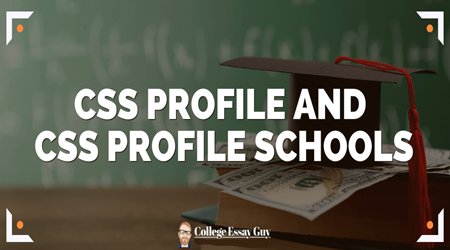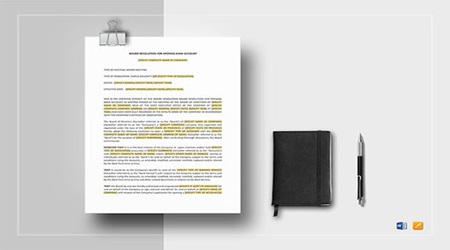More than 300 colleges, institutions, and scholarship organizations require the CSS Profile as part of their institutional financial aid application process. It can be difficult to complete the CSS Profile, formerly known as the College Scholarship Service Profile.
Senior director of enrollment and financial aid at the University of Rochester in New York, Samantha Veeder, notes that “filling out any kind of form can be a challenge for some students.” “But it is absolutely necessary in order for colleges and universities to gather the data that they need to award their limited financial aid grants and scholarships in a way that’s equitable.”
The CSS Profile: What Is It?
When it comes to nonfederal scholarships and other forms of institutional help, the CSS Profile—which is managed and controlled by the College Board, the same organization that creates the SAT—opens doors that can have a significant impact on college expenses.
With the goal of providing a more comprehensive financial picture of a family than the Free Application for Federal Student Aid, or FAFSA, the CSS Profile gives families the chance to explain any special or unusual circumstances that may have an impact on their capacity to pay.
“Be prepared for more in-depth information in the CSS Profile,” advises Elaine Rubin, director of corporate communications at Edvisors, a website that provides resources for higher education. “Unfortunately when it comes to families who don’t want to provide that information, it may be a requirement, especially if your student or child is going to a school that requires the CSS Profile.”
According to analysts, the majority of schools that demand the application are private colleges or other establishments with substantial endowments.
Schools with a CSS Profile
The CSS Profile is not necessary for all schools and institutions to assess applicants for need-based financial aid. There are public schools among the many private ones.
For the 2024–2025 academic year, the following schools are examples of those that either accept or require the CSS Profile:
- University of America (DC)
- University of Brandeis (MA)
- Virginia’s William & Mary
- The Duke University in North Carolina
- New Jersey’s Stevens Institute of Technology
- University of Michigan in Ann Arbor
- Southern California University
- Institute of Worcester Polytechnic (MA)
Here is a list of all the schools that have adopted the CSS profile.

How to Finish the CSS Profile
The procedures listed below should be followed by families seeking financial aid and interested in colleges that use the CSS Profile, as well as students applying to colleges that need it.
Create an account on the college board.
It’s possible for students who took the SAT to already have a College Board account, which they can utilize to finish the CSS Profile. Visit the College Board website and log in or make a profile.
assemble the necessary paperwork
For students interested in receiving federal financial aid, the CSS Profile requires tax records from the same year as the FAFSA. The CSS Profile can be completed mostly with the same paperwork that students have already completed the FAFSA.
Families report their income for the two years before the year the student intends to attend college on both forms. For example, a family filing for the 2024–2025 school year will utilize the federal tax return from 2022.
However, families should anticipate the need for more paperwork. The College Board lists these as their bank statements, assets, W-2 forms, and other documents of their income for the current year, as well as evidence of their untaxed income and perks.
Choose Colleges
Students have the option to designate which universities should receive their CSS Profile. Gail Holt, dean of financial aid at Amherst College in Massachusetts, says there is no cap on the number of institutions a student can apply to, even if they are not required to pay an application fee.
Fill out the Application
The CSS Profile needs to be filled out by students each year they wish to apply for institutional financial aid.
Brad Lindberg, associate vice president of institutional initiatives and enrollment at Grinnell College in Iowa, notes that there were not many modifications made to the CSS Profile this year, in contrast to the FAFSA, which was significantly redesigned as a result of the FAFSA Simplification Act. For questions that families might misreport, for instance, the instructions have been enhanced, he says.
Families can also describe any unique situation. According to experts, this is an excellent spot to explain anything that isn’t clear from their tax returns or other concerns, including the expenses of taking care of a grandmother who lives abroad or other financial difficulties. Families should remember that in addition to submitting information about a unique condition, they can request additional funding by getting in touch with the financial aid staff of a college.
Send in the Application
The CSS Profile cannot be forwarded to universities until a fee is paid by the family or they obtain a waiver.
The College Scholarship Service (CSS) Profile is an online application used by many American colleges and universities to assess if a student needs institutional support in addition to federal aid. While filling out the CSS Profile is not required, doing so will increase your chances of receiving grants and scholarships from participating colleges. The procedure for including the CSS Profile with your college application is described below:
-
Selecting the Appropriate Time for Submission:
Not every college or university requires the CSS Profile. You should visit the admissions website or contact the financial aid office of each institution you are applying to to find out if the CSS Profile is necessary and by when.
Even if you are not officially required to submit the CSS Profile to be eligible for grants or scholarships, certain universities may strongly encourage you to do so.
2. Opening and Completing Your Account:
Go to the College Board website (https://www.collegeboard.org/) and create an account to access the CSS Profile application.
Provide specific information about your family’s financial situation, including income, assets, and liabilities. We will use this information to determine your financial need.
Don’t forget to ask your parents or guardians to complete their section of the CSS Profile if they are in charge of your finances.

3. Sending the Profile onward:
Once your profile is complete and your parents’ or guardians’ component is finished, you can choose which colleges to submit your CSS Profile to.
There is a fee associated with sending the CSS Profile to each institution. Nonetheless, fee waivers are available to students who can demonstrate their financial necessity. Make sure you check out the College Board website for additional details regarding eligibility.
After selecting the universities, you can electronically submit your CSS Profile via the College Board website.
4. Additional Points to Recall:
To avoid last-minute problems, try to submit the CSS Profile well in advance of each college’s deadline.
Please double-check that your application is accurate and full before submitting it.
Make copies of all the paperwork you send to the CSS Profile and the colleges you are applying to.
By understanding the purpose of the CSS Profile and adhering to these guidelines, you can expedite the application process and increase your likelihood of receiving financial aid to help you achieve your academic objectives. It is best to look into certain college requirements and deadlines to ensure timely and thorough submissions.
Return Later
The College Scholarship Service (CSS) Profile understands that it could be necessary to go back and make adjustments after completing the application. Here’s how to utilize this flexibility:
Maintaining Your Progress:
The CSS Profile allows you to save your application at any point while it’s being processed. This suggests that you can complete the application in stages, stopping as needed, and returning to complete the sections you left off with.
This feature is especially helpful when you need to gather supporting documentation—like tax returns or other financial records—before completing specific sections.
Returning to Final:
You can access your application at any time, up to the colleges you’ve selected to submit it by, after it has been saved.
To view your stored application, simply log into your College Board account and navigate to the CSS Profile section. You can choose to go on working on your open applications after that.
This tool allows you to review the data you’ve already submitted, make any necessary edits, and submit the completed application when you’re done.
Remember:
Even if you can save and return your application, it’s crucial to submit the CSS Profile well in advance of the dates specified by each college. By getting started early, you’ll have more than enough time to complete the application and address any issues before the deadline.
Understanding the flexibility of the CSS Profile will help you effectively manage your application process, guarantee timely submissions, and raise your chances of receiving financial aid from participating universities.